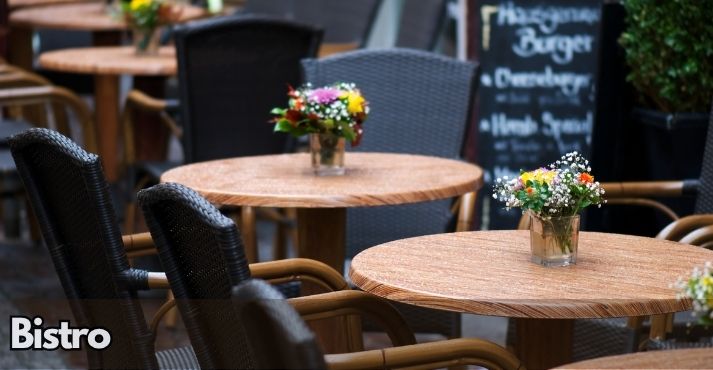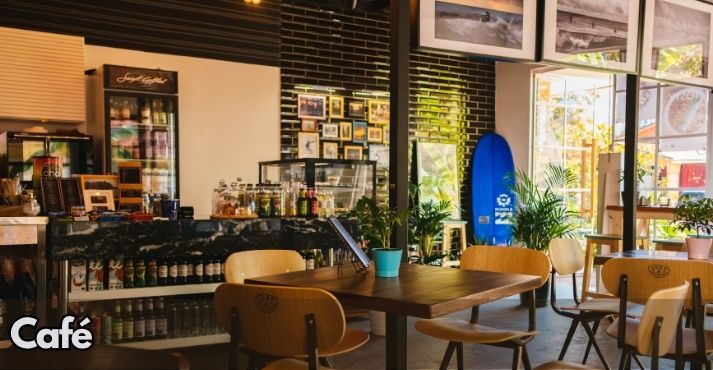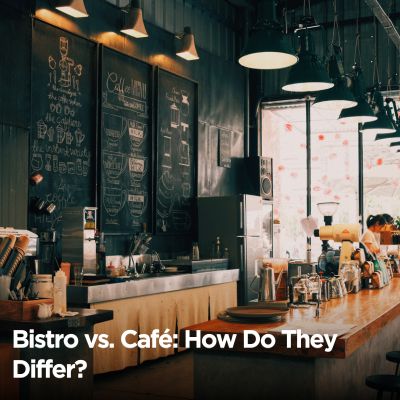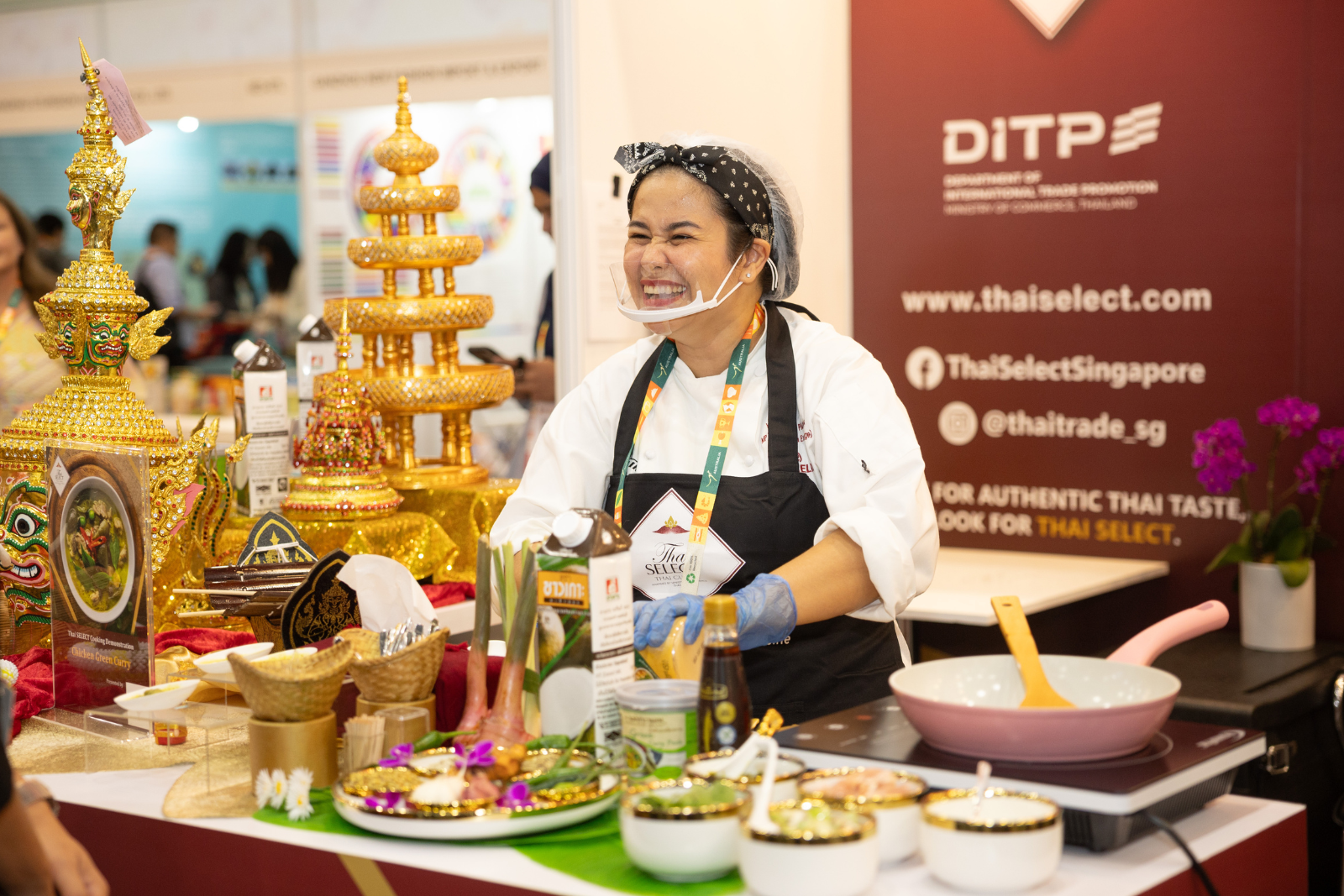You’re walking through a charming neighborhood, drawn by the sight of small tables outside one spot and the rich scent of coffee from another. One sign says “Bistro,” and the other says “Café.” Both look inviting, offering a relaxing place to unwind, but they’re not quite the same.
It’s easy to confuse the two, especially when deciding where to sit and enjoy a meal or a quick break. Each has its own style, menu, and purpose, and knowing the difference can help you choose the right place for the experience you’re after.
In this guide, we’ll explain the primary differences between a bistro and a café, from the menu to how they serve guests. Whether you’re dining locally or planning a trip, you can confidently tell them apart and enjoy the right atmosphere for your meal.
What is a Bistro?

A bistro is a small, casual yet slightly formal French restaurant that originated in Paris. Known for its cozy and relaxed atmosphere, a bistro provides a welcoming environment where guests can enjoy hearty meals with wine or other beverages.
While bistros have roots in French culture, their appeal has expanded globally, and today, you’ll find them in many cities, offering a taste of French culinary traditions.
A bistro is not the same as a typical full-service restaurant. While both serve food and beverages, bistros are more casual, with a simpler, homier style.
Bistros focus on comfort and affordability, making them an excellent choice for locals and tourists seeking a satisfying meal in a laid-back setting.
In a bistro, the menu features a variety of comforting, often rustic dishes like stews, roasted meats, and simple seafood options. These dishes are usually hearty, providing a satisfying experience for guests.
Pair these meals with a glass of wine and have the perfect bistro dining experience. Think of it as a place where food and beverage combine to create a warm and inviting atmosphere, great for long conversations or an afternoon escape.
The Origins of the Bistro
The word “bistro” has a fascinating history that dates back to the early 19th century in Paris. It’s believed to have come from the Russian word bystro, meaning “quickly,” which refers to the need for fast service during unrest.
When Russian soldiers occupied Paris, they would often shout “bystro!” when ordering food. In response, local tavern owners began offering simple, quick meals to the soldiers.
Over time, these small venues became a staple of Parisian dining, providing comfort food for working-class Parisians.
Bistros grew in popularity, becoming gathering places where locals could meet, relax, and enjoy hearty meals. They weren’t just places to eat; they were places to socialize and connect.
Today, bistros maintain that welcoming, community-oriented feel, offering a personal and familiar dining experience that draws people in.
Menu and Dining Experience in a Bistro
When you enter a bistro, you can expect a menu filled with satisfying, hearty dishes. Unlike a café, which tends to offer lighter fare such as pastries and salads, a bistro’s offerings are often more substantial.
You might find dishes like boeuf bourguignon (beef stew), coq au vin (chicken cooked in wine), or duck confit. These rich, flavorful meals make for a more filling dining experience that pairs perfectly with a glass of wine or a crisp beer.
The atmosphere of a bistro is essential to the dining experience. Usually, you’ll find a cozy, warm interior, often decorated with simple, rustic touches that make you feel like you’re dining in someone’s home.
It’s a place where you can linger over a meal and enjoy the experience of dining with friends, family, or even strangers who are quickly turned into new acquaintances.
Whether you’re there for a relaxed meal or a celebratory toast, the bistro’s welcoming environment contributes to the overall guest experience, making it an ideal setting for comfort and conversation.
What is a Café?

A café is usually a casual place where people enjoy coffee, light meals, and a relaxed atmosphere. While a bistro leans more toward full meals and wine service, cafés focus on coffee culture and quick bites.
The café dining experience centers on connection, comfort, and convenience, making it a go-to spot for morning routines, midday breaks, or casual conversations.
Modern cafés often reflect a more contemporary vibe, with cozy interiors, free Wi-Fi, and a steady stream of regulars ordering their favorite brews and snacks.
Whether a solo work session with a laptop or a meet-up with friends, cafés offer a flexible and welcoming environment for all social moments.
The Origins of the Café
Cafés trace their roots back to the coffee houses of 17th-century Europe, where intellectuals and artists gathered to talk, write, and share ideas over a hot drink. These early spots influenced cultural and political thought across Europe.
As the concept spread across the continent, it took on new forms. Today’s cafés continue that tradition in a more modern setting.
They’ve become casual gathering places in cities and towns worldwide, often known for their signature food and drinks like espresso, tea, and baked goods.
With more than 2.25 billion cups of coffee consumed globally daily, it’s clear that cafés are deeply woven into daily life.
Menu and Dining Experience in a Café
Cafés typically offer a menu built around coffee and lighter fare. Espresso-based drinks, including cappuccinos, lattes, and lungo coffee, are café staples, often made with attention to detail and even a touch of latte art.
Alongside drinks, guests can enjoy café food and drinks such as sandwiches, quiches, salads, and a tempting range of cakes and pastries. The vibe is relaxed and informal, perfect for a quick snack, a casual meeting, or a quiet hour alone with a good book.
The café dining experience is less about structured meals and more about flexibility, whether you’re in for five minutes or an entire afternoon.
Key Differences Between a Bistro and a Café

Bistros and cafés may seem similar initially, but they offer different dining experiences. Each creates its own vibe, from the type of food to how service works. Knowing the bistro vs. café differences can help you pick the right spot depending on what you’re in the mood for.
Here’s a simple comparison:
| Feature | Bistro | Café |
|---|---|---|
| Atmosphere | Casual yet slightly refined, often with a traditional interior and table service | Relaxed, informal, and welcoming—perfect for short visits or longer coffee breaks |
| Menu | Hearty meals like stews, meats, and daily specials, often paired with wine | Light snacks, cakes and pastries, sandwiches, and a range of specialty coffee drinks |
| Beverage Focus | Wine, beer, and soft drinks | Coffee-led, including espresso, latte, and lungo coffee |
| Dining Style | Full meals are served at the table, often enjoyed at a slower pace | Walk-in friendly, often with self-seating or minimal service |
| Service | Full table service | Counter service or casual, limited table service |
| Guest Experience | Cozy and meal-focused | Easygoing and centered on café food and drinks |
So whether you’re sitting down for a warm dish at a bistro or grabbing your morning coffee at a café, both serve their purpose differently.
When to Choose a Bistro vs. a Café
Deciding between a bistro and a café depends on what you want — a full dining experience or a casual moment with coffee and a snack.
A bistro is a better choice if you want a sit-down meal that feels relaxed but still offers quality food. Bistros are well-suited for evening dinners, weekend brunches, or casual dates. They usually serve hearty dishes like coq au vin, grilled meats, or slow-cooked stews.
Meals are often prepared in a full commercial kitchen, giving you a restaurant-style experience with less formality.
Cafés, on the other hand, cater to a lighter, quicker experience. They’re great for morning routines, mid-day breaks, or casual meetups. You’ll find different food and drinks there, like croissants, sandwiches, and espresso-based beverages.
Many cafés also feature specialty drinks such as cold brew and teas, making them ideal for grab-and-go customers or those who want to linger over a laptop.
In short:
- Choose a bistro when you’re hungry for a full meal, planning a relaxed outing, or want something warm and comforting.
- Choose a café when you’re in the mood for a quick bite, a caffeine fix, or a casual place to read, work, or chat.
Both offer their own kind of comfort; you just need to decide what fits your moment best.
Conclusion
While bistros and cafés offer different dining experiences, the choice depends on your preferences. Bistros provide hearty meals in a more formal, relaxed setting, perfect for a full meal or a cozy evening out.
On the other hand, cafés offer a casual vibe, perfect for grabbing a coffee, light snacks, or a quick bite while soaking in the atmosphere.
Next time you’re out, think about what suits your mood, whether it’s a warming stew at a bistro or a refreshing cold brew at a café.
So, which do you prefer: a leisurely meal at a bistro or a quick coffee break at a café? Share your thoughts or experiences in the comments below!













